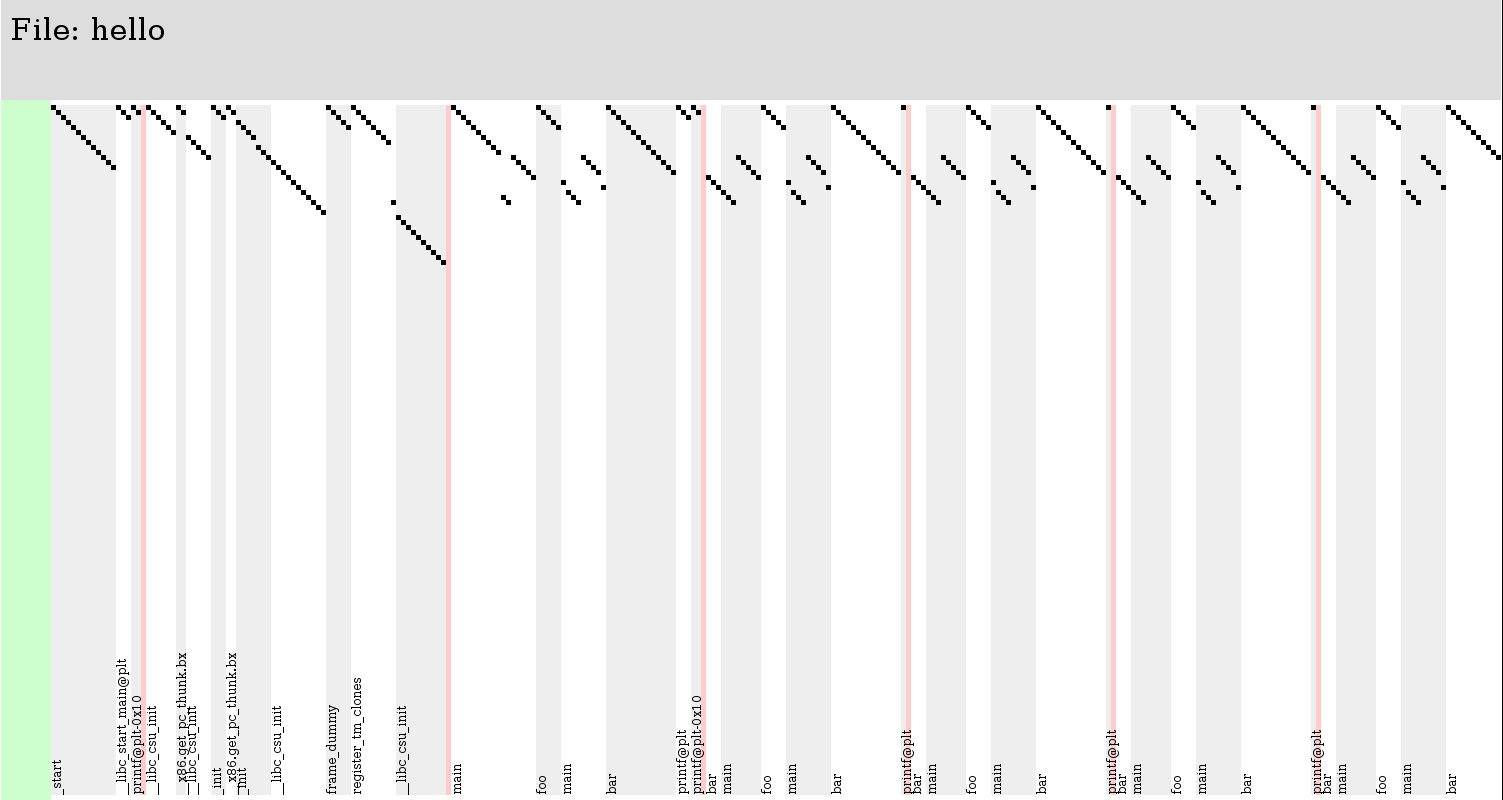ELFPlayer is a tool for visualizing the execution of 32-bit x86 ELFs (with symbols). This can be useful for getting a better understanding of what your code is doing, crafting exploits, or side-channel analysis.
Currently, ELFPlayer is prototype quality. This is a beta release.
ELFPlayer is made up of three components: The tracer, encoder, and player.
The tracer is a C program that uses ptrace to save all of the EIP values as your
program executes. To use it, pass the output file on the command line followed
by the command to execute under ptrace (just like strace).
For exaple, if you've built the hello sample in the samples directory (by
gcc -m32 hello.c -o hello), here's how you trace it (with an unnecessary
command-line argument for demonstration):
$ ./tracer/tracer ./output ./samples/hello --an-argument-to-hello
This will save all of the EIP values to ./output.. To visualize it, you first
have to encode it into a JSON file that the player supports. Use the encoder
tool to do that.
The encoder (Ruby script) transforms the tracer's output into an easy-to-parse
JSON file for the player to play. Supposing we ran the tracer on
./samples/hello and its output is saved in ./output, the command to encode
is:
$ ruby encoder/encode.rb -b ./samples/hello -o ./player/out.json ./output
This will write the encoded JSON into ./player/out.json, the location the
player expects its input to be.
The player is an HTML5 Canvas web page that fetches the JSON file and displays a visualization of the execution. It currently supports only very primitive scrolling by using the mousewheel or by clicking the scrollbars on the left or the top. To open it, run:
$ firefox ./player/ptrace.html
For now, it will probably only work with firefox. I haven't tested it with anything else.
Red columns represent continuous sequences of EIP values which were not in regions known to the encoder. For example, if execution jumps into glibc for 100 instructions, those 100 instructions are displayed as a single red column. Blue dots on the top or bottom mean there is an instruction above or below the view, respectively. Use the (shitty) left scrollbar to bring them into view.
